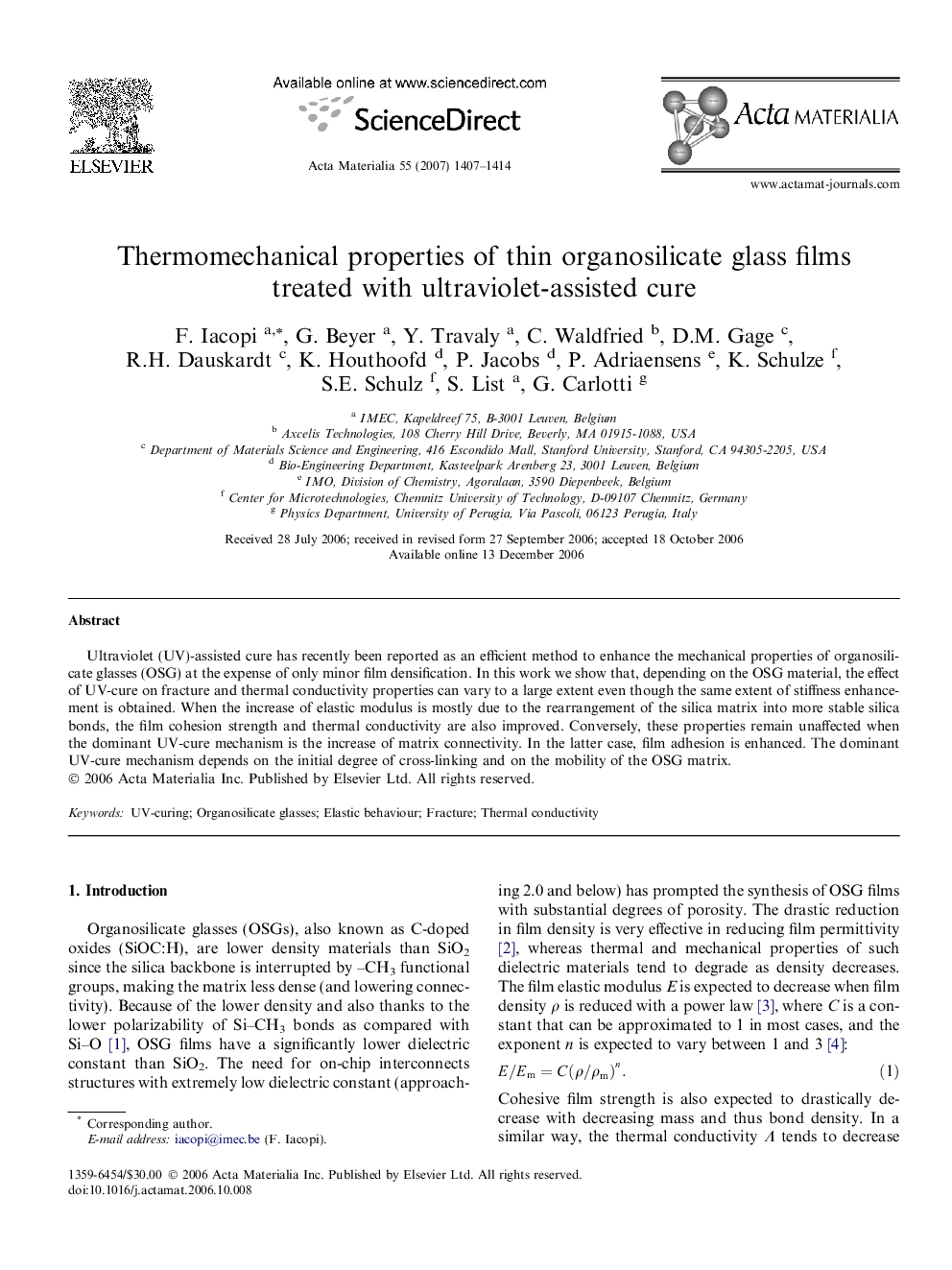| Article ID | Journal | Published Year | Pages | File Type |
|---|---|---|---|---|
| 1449873 | Acta Materialia | 2007 | 8 Pages |
Abstract
Ultraviolet (UV)-assisted cure has recently been reported as an efficient method to enhance the mechanical properties of organosilicate glasses (OSG) at the expense of only minor film densification. In this work we show that, depending on the OSG material, the effect of UV-cure on fracture and thermal conductivity properties can vary to a large extent even though the same extent of stiffness enhancement is obtained. When the increase of elastic modulus is mostly due to the rearrangement of the silica matrix into more stable silica bonds, the film cohesion strength and thermal conductivity are also improved. Conversely, these properties remain unaffected when the dominant UV-cure mechanism is the increase of matrix connectivity. In the latter case, film adhesion is enhanced. The dominant UV-cure mechanism depends on the initial degree of cross-linking and on the mobility of the OSG matrix.
Related Topics
Physical Sciences and Engineering
Materials Science
Ceramics and Composites
Authors
F. Iacopi, G. Beyer, Y. Travaly, C. Waldfried, D.M. Gage, R.H. Dauskardt, K. Houthoofd, P. Jacobs, P. Adriaensens, K. Schulze, S.E. Schulz, S. List, G. Carlotti,
